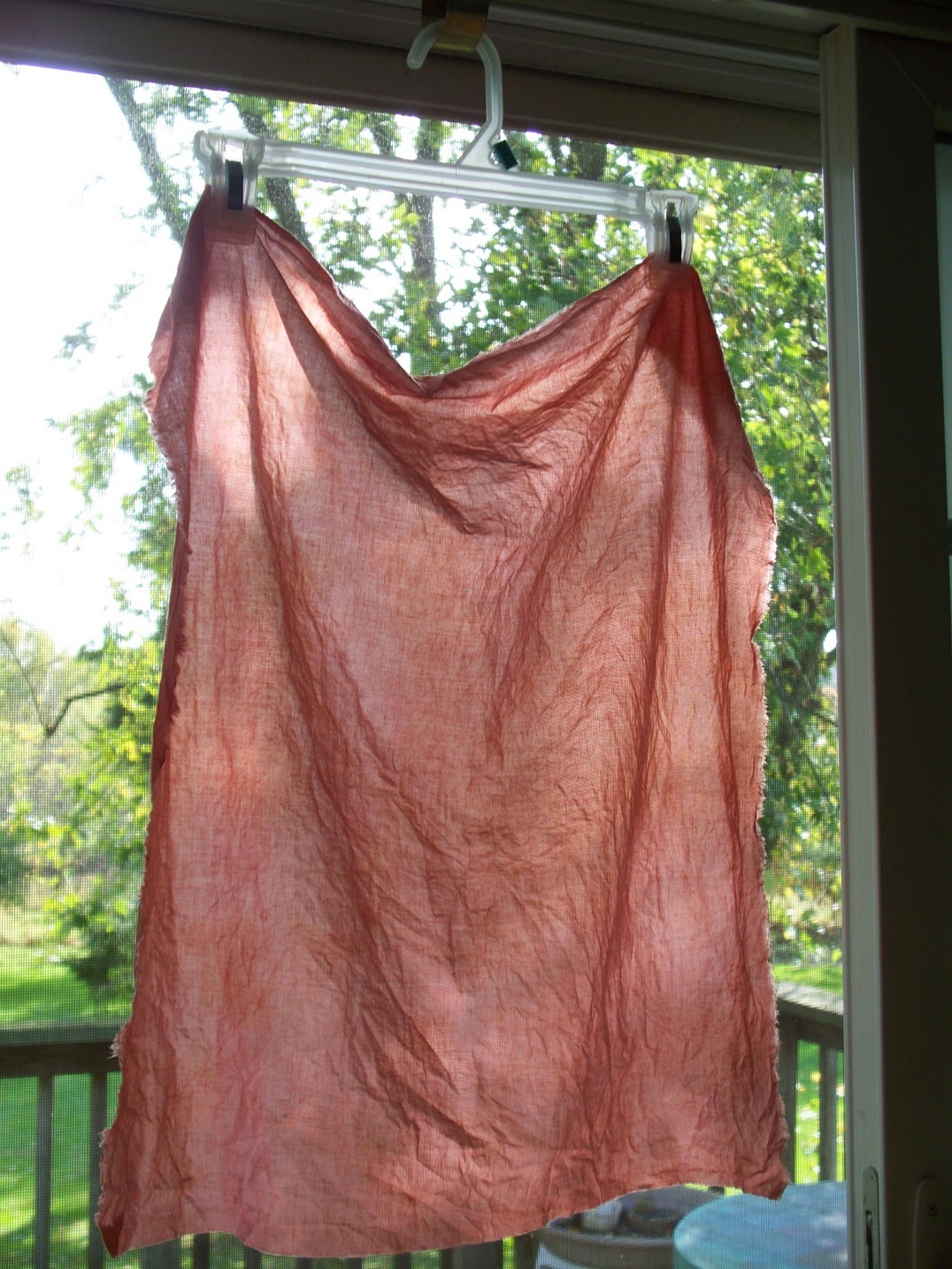*medicinal properties
Date of Experiment Nov./Dec. 2014
Water used was tap water (Chlorine and Fluoride)
Area - Lancaster, Pa.
I have been extracting color from plant materials lately but haven't
tried printing on fabric.
I found some Gum Tree leaves lying on the ground several weeks
ago in a small shopping center near my home.
As they were a little crisp; I soaked them in warm water and a little
alum. The cotton fabric was also soaked in alum and rinsed.
I used two separate pieces instead of the normal way to lay
the leaves down and then folded over.
I also used egg yolk painted on the leaves and then placed
and rubbed gently down onto the fabric. ( I read this technique
on someone's blog) I then painted the egg mixture on the top side
of the leaves also and then lay the second piece of fabric on top.
The two pieces were then wrapped around a piece of oak limb as
tightly as I could get it.
I used cotton bamboo yarn to wrap and tie.
This piece was steamed over a large pot - covered for a couple
of hours.
Left overnight and then I opened it in the afternoon.
This is my first decent leaf print! Yay!
This is the top layer; the bottom layer's prints
are not that clear. I've done another experiement
of over dyeing with it.
It's not perfect but it's a start and I'm learning a lot
in the process.
This is the bottom piece that I over dyed with red leaves,
whose name escapes me. In this liquid with the red
leaves I added cream of tar tar and some fresh lemon
juice which turned the color a light orange.
The brown marks on the fabric is from the branch of
the oak that the fabric was wrapped around.
I hung it up and let it cure for a couple of weeks
and then I washed it. There was some color loss but
nothing major.
Again, I always google just to make sure that what plant
matter that I use is not toxic in any way. To my
surprise I found out a lot of information about the
Sweet Gum Tree.
*It is Medicinal (Always consult a professional herbalist)
Here are just a couple of pages that I found
http://www.eattheweeds.com/sweet-gum-tree/
Sweet Gum tea was an herbal treatment for the
flu and the Cherokee made a tea out of the bark.
http://www.foragingtexas.com/2008/08/sweetgum.html
leaves can be mashed into a poultice for antibiotic
and sting-bite relief
The leaves contain natural antibiotics and were used
to pack wounds. Crush or masticate (chew) the leaves
some first to release these antibiotic compounds.
Some of the seeds inside the green, spikey pods contain
shikimic acid, which is used to make the active ingredient in
the flu-fighting medicine Tamiflu. Tea and alcohol extracts
of the crushed seed pods have been traditional flu
medicines in several different cultures.
Lots of Information out there and so much more
to learn!
Happy Foraging!











































